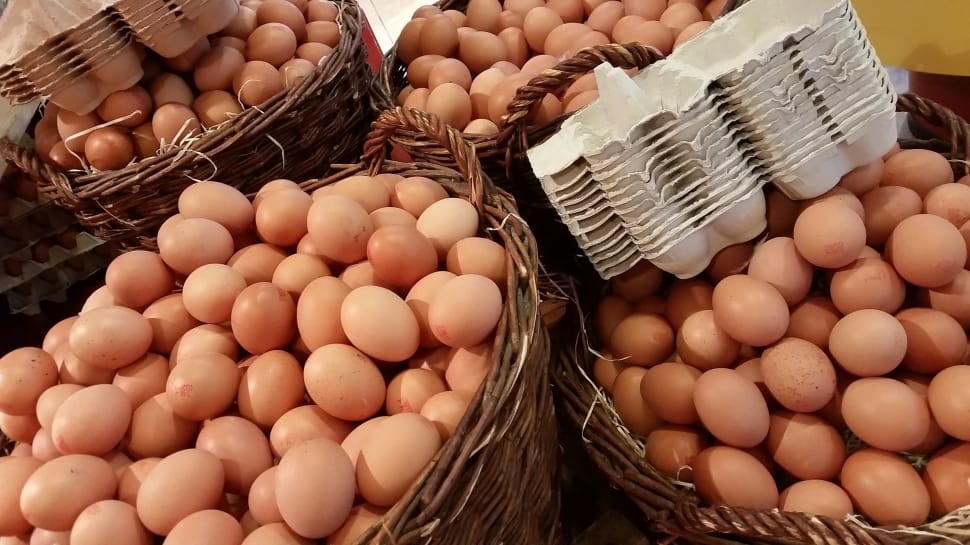What Are Fake Chicken Eggs and How Are They Made? Are There Any Health Risks Associated with Consuming Them?
Fake chicken eggs, also known as artificial eggs, are a counterfeit version of chicken eggs that have been circulating in some parts of the world. These eggs are often sold at a lower price than genuine ones, which makes them an attractive option for some consumers. However, the production of these fake eggs is an unregulated industry, which means they can pose significant health risks to consumers. In this article, we will explore how fake chicken eggs are formed and the processes used to make them.
How are fake chicken eggs formed?
Fake chicken eggs are usually made from various materials, such as wax, plaster of Paris, and even plastic. These materials are shaped into egg-sized molds, which are then filled with a mixture of chemicals and food products to mimic the properties of egg whites and yolks.
The process of making fake chicken eggs is not standardized, and the ingredients used vary depending on the manufacturer. Some manufacturers use food-grade materials, such as starch and gelatin, to create egg whites and yolks. However, others use dangerous chemicals, such as industrial-grade calcium carbonate and alum, which are known to cause health problems.
What processes do they use to make fake eggs?
The production of fake chicken eggs is a complex process that involves several stages. Here are the primary steps involved in making fake eggs:
- Molding
The first step in making fake chicken eggs is to create the molds. These molds are often made of silicone, metal, or plastic, and are designed to mimic the shape and size of real chicken eggs.
- Creating the egg white
To create the egg white, the manufacturer may use a combination of food-grade materials, such as starch, protein, and gelatin. The ingredients are mixed with water to create a paste-like consistency, which is then poured into the egg white molds.
- Creating the egg yolk
To create the egg yolk, the manufacturer may use a similar combination of food-grade materials, such as starch and pigments. The mixture is then poured into the egg yolk molds.
- Drying
After the egg white and yolk have been poured into their respective molds, the molds are left to dry. This process can take several hours, depending on the manufacturer's instructions.
- Coloring
Once the egg whites and yolks have dried, they are removed from their molds and assembled into complete eggs. The manufacturer may then use food coloring to make the fake eggs look more like real eggs.
The health risks of consuming fake chicken eggs
Consuming fake chicken eggs can pose significant health risks to consumers. The materials used in the production of fake eggs can contain harmful chemicals and toxins, which can cause health problems such as food poisoning, gastrointestinal issues, and even cancer.
Additionally, some fake eggs have been found to contain high levels of bacteria, such as Salmonella, which can cause severe illness and even death. The risk of bacterial contamination is especially high when the fake eggs are not properly stored or cooked.
Conclusion:
Fake chicken eggs are a growing problem in some parts of the world. These eggs are often produced using dangerous chemicals and toxins, which can pose significant health risks to consumers. It is essential to be vigilant when purchasing eggs and to ensure that you only buy from reputable sources. If you suspect that you have consumed fake eggs, it is crucial to seek medical attention immediately. By taking these precautions, you can help protect yourself and your family from the dangers of fake chicken eggs.
#fakefood #fakeeggs #foodfraud #counterfeitfood #foodindustry #foodsafety #foodquality #foodcontamination #foodtoxicity #foodmanufacturing #foodproduction #foodhealth #healthrisks #foodpoisoning #foodborneillness #foodsecurity #consumerprotection #foodregulations #foodlaw #foodsustainability #foodtransparency #foodintegrity #foodanomalies #foodscandal #foodsensory #foodsensoryevaluation #foodauthenticity #foodtesting #foodanalysis #foodqualitytesting #foodsafetytesting #foodsampling #foodchemistry #foodmicrobiology #foodbiotechnology #foodtraceability #foodlabelling #foodpackaging #foodprocessing #foodengineering #foodtechnology #foodinnovation #foodresearch #foodeducation #foodnutrition #foodscience #foodservice #foodpreparation #foodstorage #foodpreservation #foodwaste #foodrecycling #foodrecovery #foodreuse #fooddonation #fooddistribution #foodnetwork #foodsupplychain #foodlogistics #foodtransportation #foodconsumption #foodculture #foodtrends #foodhabits #foodadditives #foodingredients #foodflavors #foodaromas #foodtextures #foodsatisfactions #foodsustainability #foodethics #foodpolicy #foodadvocacy #foodawareness #foodimpact #foodjustice #foodequity #foodaccess #foodinsecurity #foodinequality





No comments
If you have any doubts please let me know.